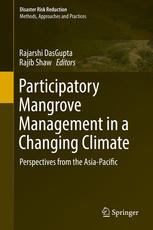

Most ebook files are in PDF format, so you can easily read them using various software such as Foxit Reader or directly on the Google Chrome browser.
Some ebook files are released by publishers in other formats such as .awz, .mobi, .epub, .fb2, etc. You may need to install specific software to read these formats on mobile/PC, such as Calibre.
Please read the tutorial at this link: https://ebookbell.com/faq
We offer FREE conversion to the popular formats you request; however, this may take some time. Therefore, right after payment, please email us, and we will try to provide the service as quickly as possible.
For some exceptional file formats or broken links (if any), please refrain from opening any disputes. Instead, email us first, and we will try to assist within a maximum of 6 hours.
EbookBell Team

4.3
18 reviewsThis book outlines the performance and management of mangroves in the changing climatic scenario of the Asia-Pacific region and draws examples and lessons from the national and community-driven mangrove conservation programs of relevant countries including Pakistan, India, Bangladesh, Sri Lanka, Myanmar, Thailand, Cambodia, Indonesia, the Philippines, and Japan as well as the Pacific islands. By highlighting the major drawbacks that hinder effective mangrove conservation, the book contributes towards enhancing climate resilience of communities through proposition of corrective methods and ameliorative approaches of mangrove conservation.
Mangroves play an important role in adapting to climate change and provide a plethora of ecosystem services that are fundamental to human survival. Yet these ecosystems are exceptionally prone to extinction due to increased human interventions and changes in environmental boundary conditions. Especially in the Asia-Pacific region, mangroves have dwindled at an exceptional high rate over the past three decades. As the threat of climate change hovers over millions of people in this region, particularly those who crowd the low-lying coastal areas, conservation/restoration of mangroves through appropriate policies and practices remain highly imperative.
The primary target readers for this book are students and researchers in the fields of conservation and management of mangroves, especially from the developing tropical countries of the Asia-Pacific region. Other target groups comprise policy planners, practitioners, and NGO workers, who will be able to apply the collective knowledge from this work towards proactive mangrove conservation through effective mediation in local communities.